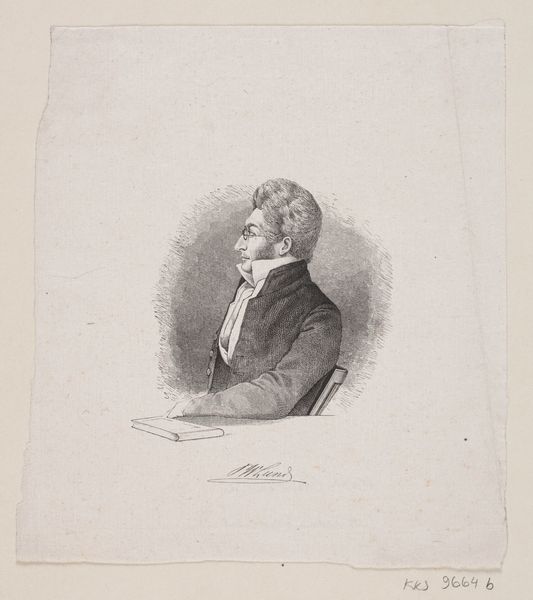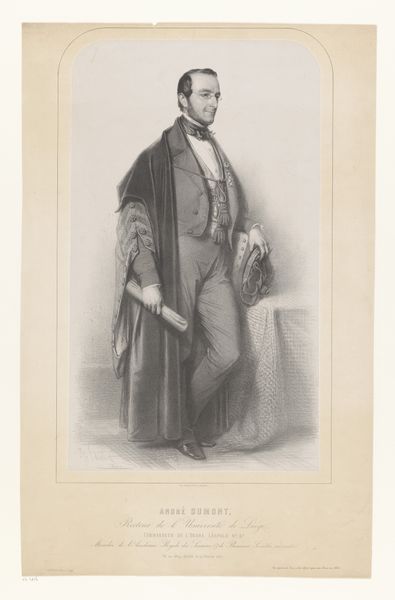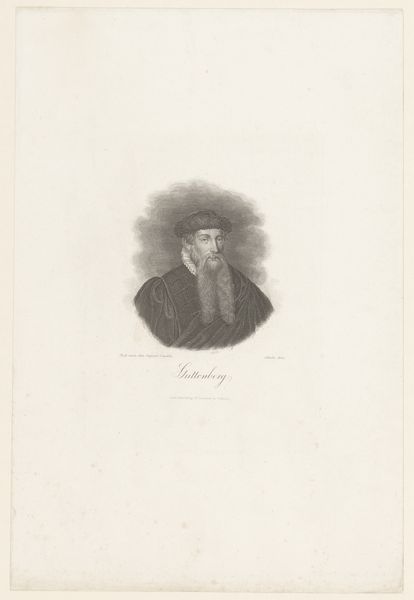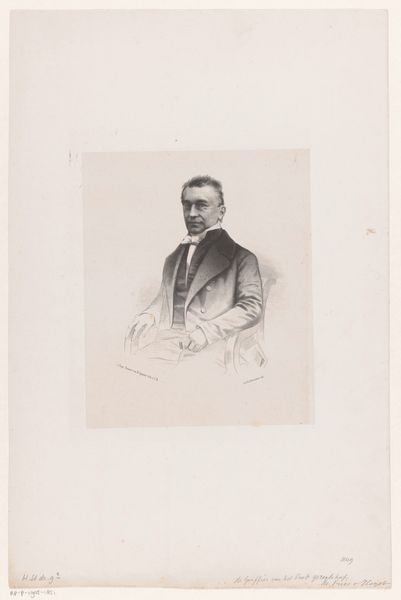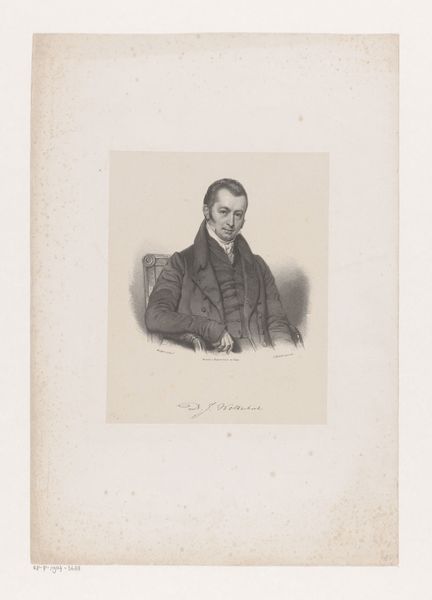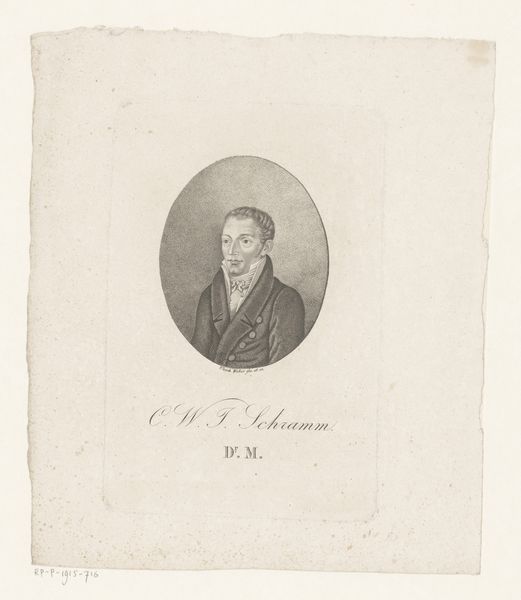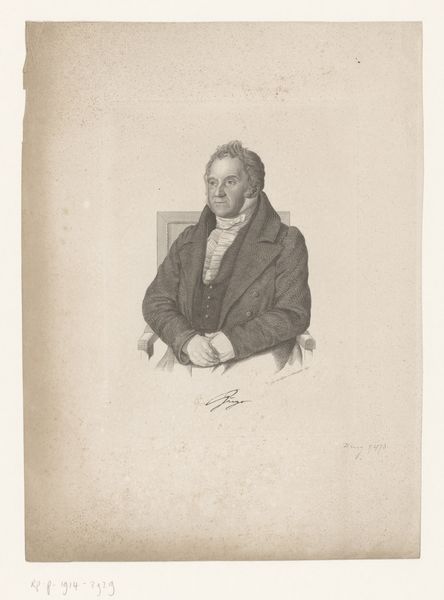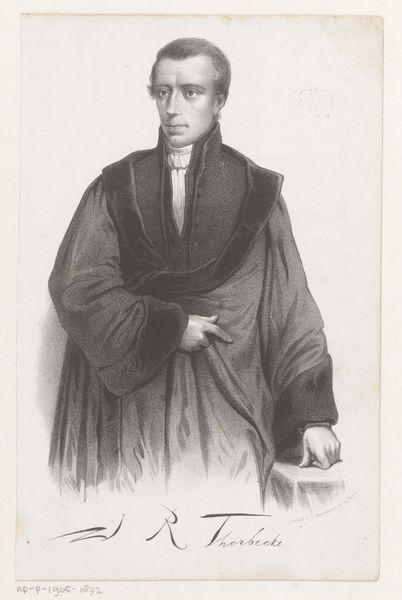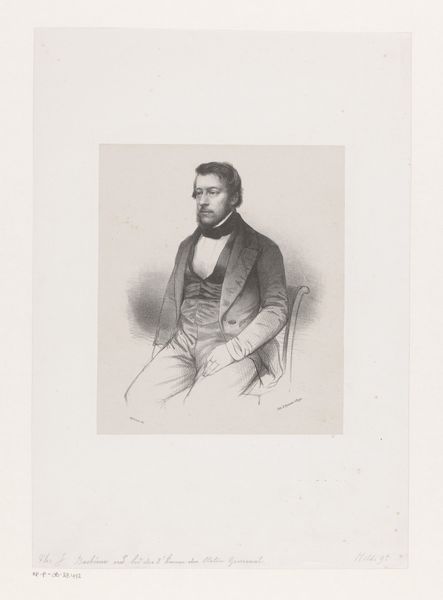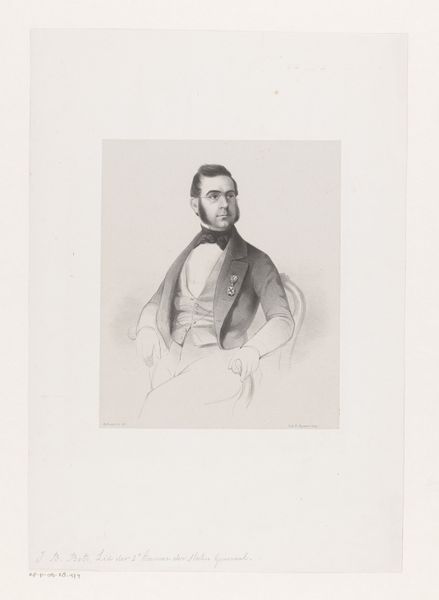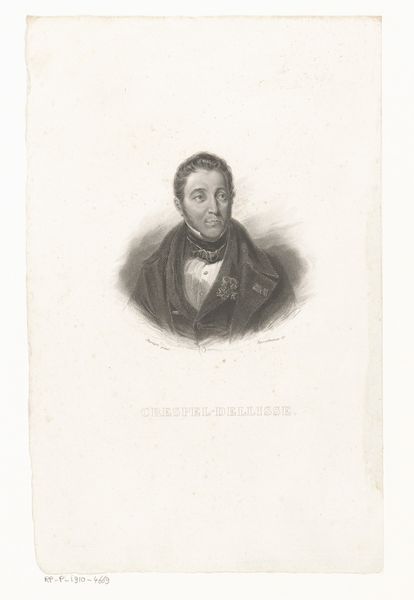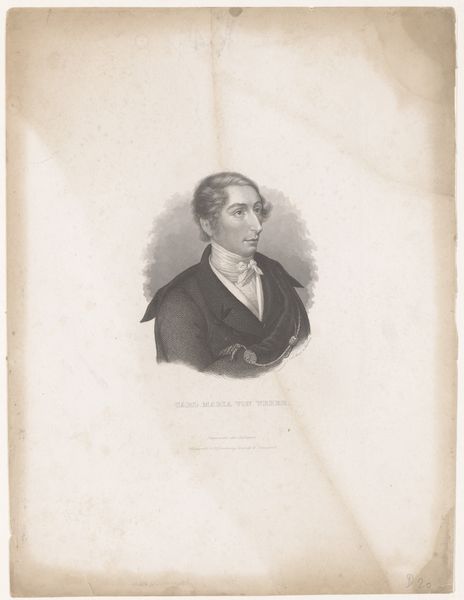
drawing, print, etching, engraving
#
portrait
#
drawing
#
neoclassicism
# print
#
etching
#
pencil drawing
#
engraving
Dimensions: plate: 9 5/16 x 6 7/16 in. (23.6 x 16.4 cm)
Copyright: Public Domain
Curator: Asher Brown Durand's engraving, "Rev. William Jay," from 1823 presents a man of stature, almost looming despite the delicate medium. My first impression? Scholarly but kind, with a hint of world-weariness about the eyes. Editor: Definitely. This piece speaks to the power structures of the 19th century. Consider the subject: Reverend William Jay, draped in what appears to be clerical robes. We have to remember the immense social and political influence held by religious figures at that time. Curator: That’s spot on! The details are fascinating; see how he casually holds his spectacles, as if pausing from profound thought? Durand’s captured this man at ease, but the heavy fabric hints at responsibility. It almost feels contradictory, doesn't it? Like he’s both burdened and comfortable in his role. Editor: Exactly. His comfortable pose is itself a statement. Who was deemed worthy of such portraits? Wealthy, educated white men like Reverend Jay, while countless others remained invisible in the historical record. It is a stark reminder of who controlled the narrative then and, to some extent, now. Curator: It's almost like Durand saw past the Reverend's public persona and tried to reveal something of the inner man through light and shadow. Though, maybe that's my imagination running wild. I do that, you know. But what's intriguing to me is how much space is above his head. Like his ideas could fill volumes! Editor: The visual cues are meticulously chosen. Consider the very technique: engraving, a meticulous, controlled process reflecting the ordered world he represents. Neoclassicism further solidifies that sense of structure and hierarchy inherent in both art and society. We should always question what isn't shown. Curator: I hear you. Thinking about it, I'm touched by how art can immortalize a fleeting expression, a pause. To be "seen," to be remembered... maybe it’s more powerful for someone like him, someone accustomed to wielding so much influence. Food for thought, isn't it? Editor: Absolutely. And to critically engage with these images, we start dismantling the legacies of power and privilege they represent, and look at art from diverse perspectives, ultimately changing whose stories are remembered and told in our world.
Comments
No comments
Be the first to comment and join the conversation on the ultimate creative platform.
